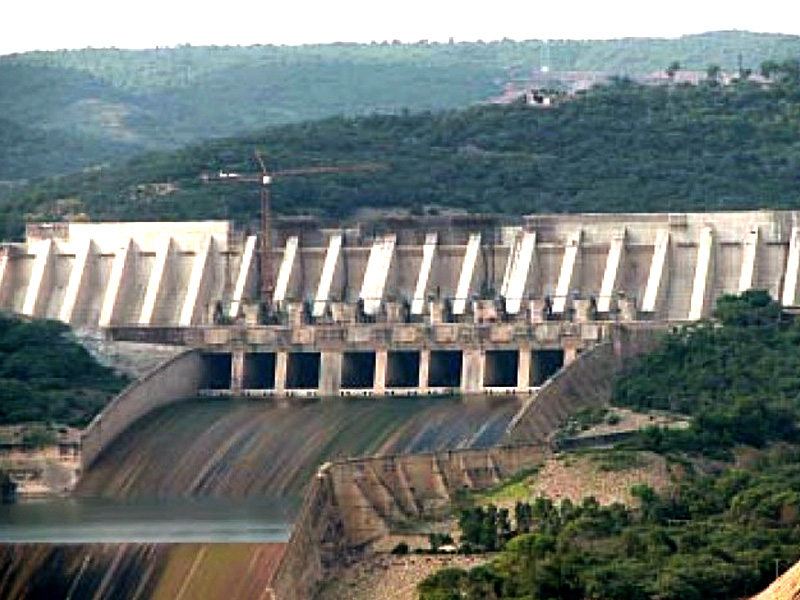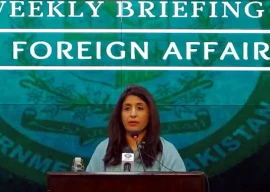
“We are ceding our ancestral land, our homes, our culture and everything for the country,” said Asadullah, a shopkeeper in Chilas, Gilgit-Baltistan (G-B). “But the reward isn’t what we expected.”
As the construction of the mega Diamer-Bhasha Dam is about to get under way, people whose homes are destined to go under huge swathes of water have some major apprehensions.
“Just look at the compensation issue. There is considerable delay – and we’ve lost a sufficient amount to inflation,” explained Asadullah.
Participants of a discussion forum held recently in Islamabad pointed out that the environmental and economic impact assessments for the project have either not been carried out or have not been shared with the stakeholders. Compensation for the displaced people is not timely either.
The government fixed the rates for land and non-land assets in 2009 whereas now the prices of lands have multiplied, experts claimed at the forum organised by the Gilgit-Baltistan Policy Institute (GBPI).
Moreover, establishing a revenue-sharing mechanism with the federal government remains unresolved, and so does G-B’s boundary dispute with the Khyber-Pakhtunkhwa (K-P).
The project is located on the Indus River, about 315 km upstream of Tarbela Dam and 180 km downstream of the G-B capital Gilgit city covering an area of 110 km with the reservoir extending 100 km upstream of the dam. The Executive Committee of National Economic Council (ECNEC) approved it in 2006 and the ground-breaking ceremony was held in 2009.
The federal government is all set to construct the mega dam with an energy generation capacity of 4,500 MW.

(AS APPEARED IN DOCUMENT ON WAPDA’S WEBSITE UPDATED TILL 11.10.2013)
Boundary dispute
However, among other constraints, the boundary dispute between G-B and K-P is a major hurdle, which needs to be settled so that it is not only built in time but the issue of the dam’s royalty, compensation for the displaced and hydel profit are also decided.
Bashir Ahmed, the G-B Minister for Works, said the federal government should first settle the boundary dispute before going ahead with the compensation and royalty plan. The people of Kohistan have made an unlawful claim on the eight-kilometre territory, which has been part of G-B for centuries, he contended.
Historically, the disputed territory has been part of the Diamer district and a grand Jirga from both sides had taken this decision. “Now I think a neutral commission can decide the issue in light of historical records,” he said, adding that the United India and British-era maps will also be helpful.
G-B lawmakers say if the issues were not resolved and the people of the region are not taken into confidence, the construction plan of the dam may hit a snag.
Meanwhile, former G-B finance minister Mirza Hussain said the royalty of the dam and its hydel profit is to be distributed as per the Constitution, but G-B is still not part of the constitution.
Ecology in distress?
Mirza also said that building the dam will carry huge environmental and economic implications for the region. According to experts, thick fog will perpetually settle on the high mountains of G-B and therefore, there will hardly be any flights to the landlocked area.
Environmental specialist Jahanzeb Murad, while speaking to The Express Tribune, said that such big projects should be initiated only after proper environmental impact assessment (EIA), and the findings of those assessments should be made public.
“The humidity caused by the 100-kilometre water reservoir may potentially have disastrous consequences for the glaciers that govern the regional climate. These glaciers don’t belong just to us; they belong to the world.”
However, WAPDA officials have tried to convince the public in G-B that the dam wouldn’t affect the ecology, the apprehension are still there. “Contrary to speculations, we are being told by experts that there wouldn’t be extraordinary rains and thunderstorms in G-B even after the construction of the Dam,” says resident Noshad Alam, referring to public consultation sessions held by WAPDA.
Published in The Express Tribune, February 6th, 2014.
COMMENTS (7)
Comments are moderated and generally will be posted if they are on-topic and not abusive.
For more information, please see our Comments FAQ




1716998435-0/Ryan-Reynolds-Hugh-Jackman-(3)1716998435-0-165x106.webp)










1730706072-0/Copy-of-Untitled-(2)1730706072-0-270x192.webp)
@Sandip Keep telling yourself that. The only "integral part" you guys are part of is fool's paradise (where whatever you claim is yours)
Everyone needs to stop complaining of regional interests and look at it as something that will benefit all of Pakistan.
@Sandip: India is not the owner of the State of Jammu and Kashmir - more importantly Gilgit/Baltistan is not the State of Jammu and Kashmir.
Finally, the victim is Gilgit Baltistan as usual.
@Ghaznavi: Guess you didn't read my comments carefully. Jammu and Kashmir is an integral part of India. One doesn't need to take NOC from others for building dams in own country. But yes, you do need to take permission and NOC if you are to build dams on someone else's territory.
Why doesn't India get NOCs for the dams it makes in Kashmir?